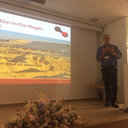Clinical and laboratory parameter dynamics as markers of blood stream infections in pediatric oncology patients with fever and neutropenia.
کلید واژه ها
خلاصه
BACKGROUND
Identifying markers associated with blood stream infection (BSI) in children with fever and neutropenia (FN) could lead to a substantial reduction in unnecessary treatment.
OBJECTIVE
The aim of this study was to determine the association between clinical/laboratory parameters and BSI in pediatric oncology patients with FN.
METHODS
This prospective study was conducted between 2007 and 2010 at the Pediatric oncology unit. Clinical and laboratory parameters were obtained from all hospitalized FN patients. Linear regression and trends were calculated to determine the association between clinical/laboratory parameters and BSI.
RESULTS
Of the 195 FN episodes in 73 children, BSIs were identified in 38 (19%) episodes. Gram-positive bacteria, gram-negative bacteria, and fungi caused 47%, 43%, and 10% of all BSIs, respectively. Mean fever duration was longer in the BSI group (5 d) compared with the non-BSI group (2 d, P=0.01). Mean (±SD) monocyte count at admission was lower in the BSI group compared with the non-BSI group (0.06±0.1 vs. 0.14±0.33 cells/mm, respectively, P=0.05). Mean C-reactive protein (CRP) levels at hospitalization days 5 to 8 were higher in children with BSI (P<0.001). Increment trends of monocyte and platelet levels and decrement trend of CRP levels were noted in the BSI group but not in the non-BSI group (P<0.01 for all).
CONCLUSIONS
Prolonged fever, lower monocyte count at admission, higher CRP levels between the fifth and the eighth hospitalization days, increment trends of monocyte and platelet levels, and CRP level decrement were associated with BSI. These factors may serve as markers for BSI in pediatric oncology patients with FN.



